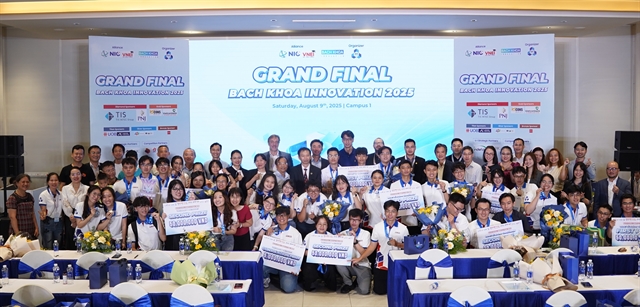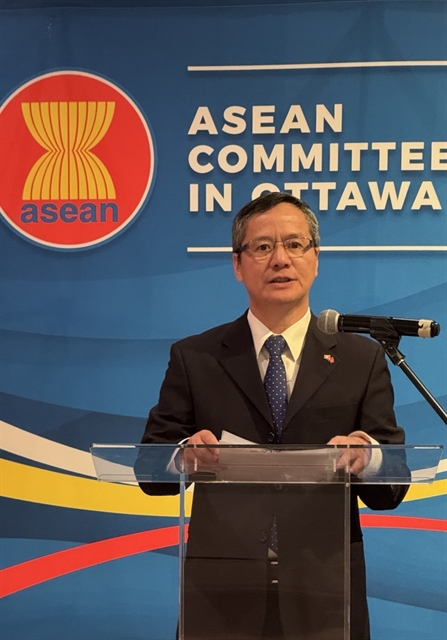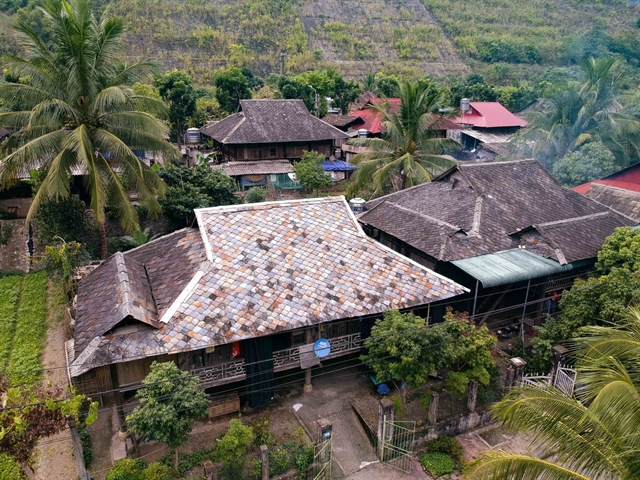 Features
Features

by Quỳnh Hoa
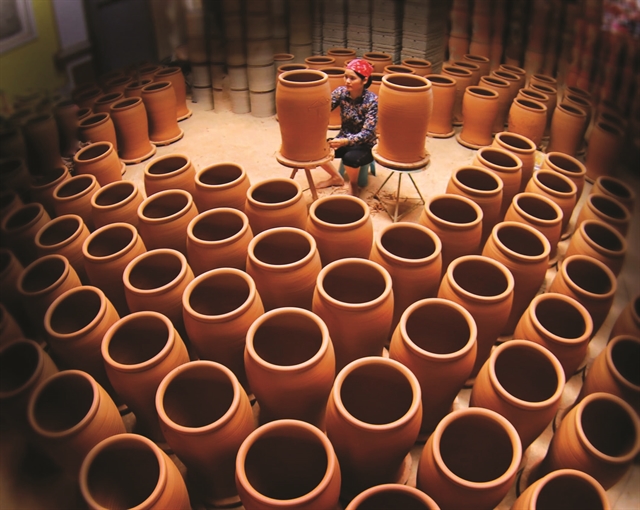 |
| Phù Lãng potters use local red clay to craft household items such as jars, vases, and water containers. Photo Vũ Tiến Dũng |
Nestled along the gentle curves of the Cầu River in Bắc Ninh Province, Phù Lãng pottery village is where tradition meets novelty.
With a history dating back over 700 years, Phù Lãng is one of Việt Nam’s oldest pottery villages, renowned for its distinct reddish-brown earthenware and wood-fired kilns.
Once bustling with craftsmen and brimming with the scent of clay and smoke, the village has faced increasing challenges in recent decades, from dwindling interest among younger generations to the pressures of modernisation and mass production.
But today, Phù Lãng is stirring again, this time with a new generation of potters and a cross-cultural collaboration that may redefine the future of this ancient craft.
The legacy of fire and clay
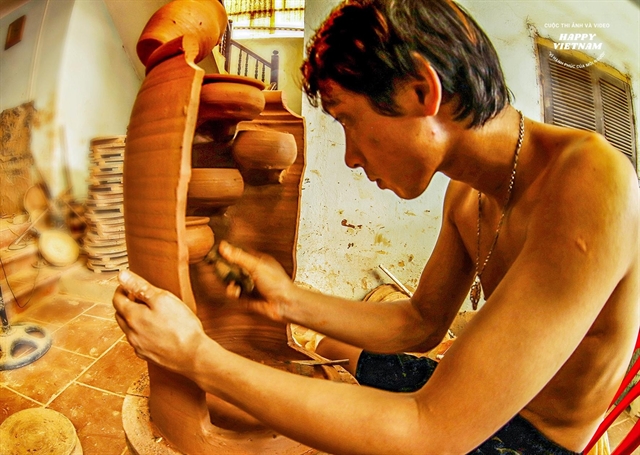 |
| The outstanding feature of Phù Lãng pottery is the use of relief method. Photo Vũ Tiến Dũng |
With a pottery history dating back to the 13th century during the Trần Dynasty (1226-1400), Phù Lãng is one of the most renowned pottery centres in northern Việt Nam.
Its products are known for their terracotta, earthy brown glaze, hand-carved patterns, and the unique technique of firing in traditional wood-fired kilns. For generations, Phù Lãng potters used local red clay to craft household items such as jars, vases, and water containers.
Yet the last few decades have been difficult for Phù Lãng. The rise of industrial ceramics, plastic wares, and cheap imports led to declining demand for handmade pottery. Older artisans were retiring, and younger generations were increasingly turning away from the craft, seeking more lucrative careers in cities.
"Many young people in my village didn't want to do pottery any more because it seemed rustic and outdated," said Bùi Văn Huân, a 35-year-old potter. “It was hard work, the income was unstable, and the market was shrinking.”
But rather than giving up on his heritage, Huân decided to take a different approach — one that would combine tradition with innovation.
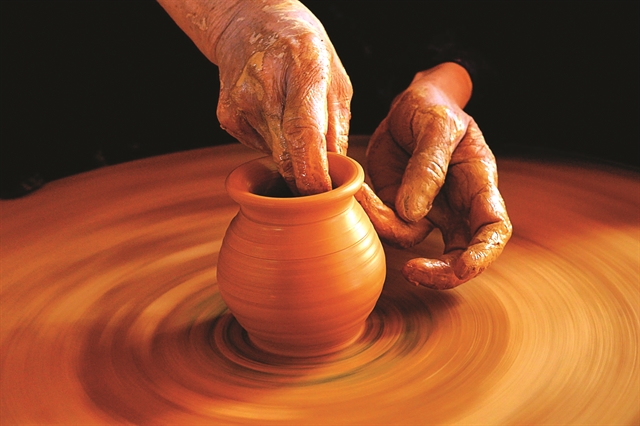 |
| Phù Lãng products are known for their earthy brown glaze, hand-carved patterns. Photo Vũ Tiến Dũng |
According to Lê Phú Thành, vice chairman of Phù Lãng Commune People's Committee [commune administration], the vitality of the village lies in both its heritage and its adaptability.
“Phù Lãng pottery was recognised as a national intangible cultural heritage in 2016. We are proud of our ancient craft, but we also understand that preserving it requires transformation. The youth bring innovation and digital literacy that are essential for reaching new markets and redefining Phù Lãng's place in the global pottery scene,” Thành said.
The young generation steps in
 |
| Artisan Yusuke Onimaru (right) and potter Bùi Văn Huân. Photo courtesy of Bùi Văn Huân |
Huân is part of a new generation of Phù Lãng artisans who are not just preserving the village’s heritage but transforming it. Armed with design knowledge, digital skills, and global perspectives, these young potters are reimagining what Phù Lãng terracotta can be.
After graduating from the Hà Nội University of Industrial Fine Arts, Huân returned to his village with a mission: to modernise Phù Lãng pottery without losing its soul.
He began experimenting with new glazes, minimalist forms, and functional designs tailored for urban lifestyles. Instead of large jars, he created tea sets, home decor items, and contemporary tableware. He also built an online presence, showcasing his works on social media and connecting with design-savvy customers across Việt Nam and beyond.
“I realised we couldn’t just make the same things our grandparents did,” Huân said. “We had to innovate new products.”
His studio, which he named Gốm Huân (Huân Pottery), quickly gained a following. By combining traditional firing methods with modern aesthetics, he carved a niche in the growing market for handmade, sustainable goods. Other young artists followed suit, and a quiet revolution began unfolding in Phù Lãng.
A bridge to Japan: JICA project
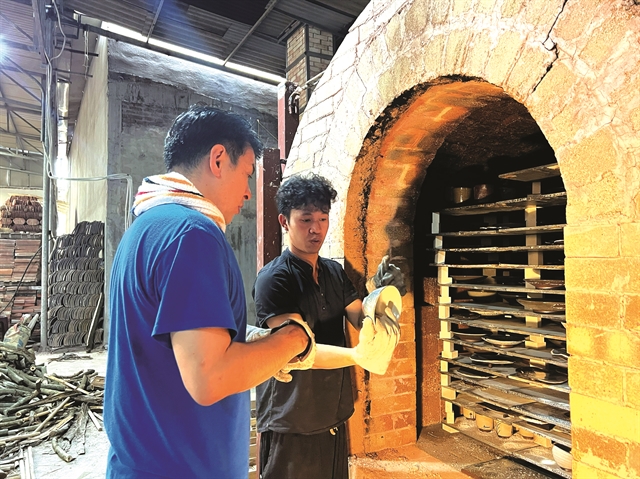 |
| Artisan Yusuke Onimaru (left) and potter Huân with a new batch of pottery produced applying Japanese technology. Photo courtesy of Bùi Văn Huân |
One major turning point came in 2021, when a development cooperation initiative between Việt Nam and Japan brought new opportunities to the village.
According to the Japan International Cooperation Agency (JICA) in Việt Nam, Onimaru Setsuzan Kamamoto Company and Toho Village of Japan have coordinated with local authorities and master artisans in Phù Lãng Village to launch a multi-phase initiative aimed at revitalising the ancient craft.
The project, titled “Sustainable Pottery Development in Phù Lãng”, aims to cultivate ceramic artisans by combining traditional pottery knowledge with advanced techniques, technologies, and experiential expertise adapted to the local context of Phù Lãng craft village.
"Our project took place in Phù Lãng traditional pottery village, with the aim of creating ceramic products related to flower arrangement and high-end dining utensils that are recognised not only in Việt Nam, but also around the world," said Onimaru Hekizan, the project director.
"We all wish to work together, in order to protect the natural environment in Phù Lãng, one of the best ceramics production sites in the world. Until today, households in Phù Lãng have continuously produced ceramics on a large-scale.
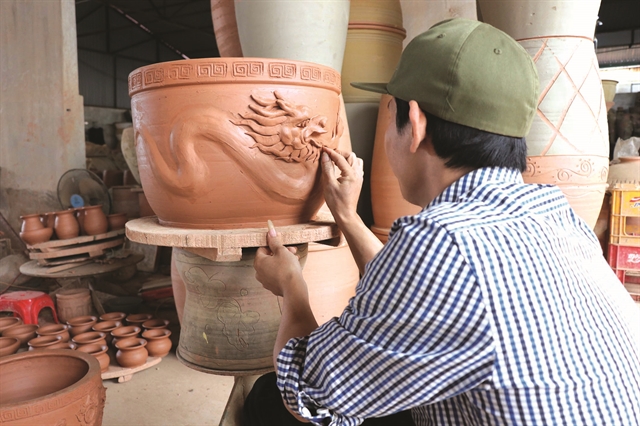 |
| Phù Lãng potteries are handcrafted with meticulous attention to detail at every stage. VNA/VNS Photo Thanh Thương |
"Those products, made of clay from the river-bed, give us a warm and familiar, feeling. Moreover, large-sized wood-fired kilns are also an interesting characteristic of the village. However, soil and wood are not unlimited natural resources. Thus, we hope that Phù Lãng will prosper as one of the leading ceramic production areas in Việt Nam, by learning methods that use as few resources as possible yet, provide the families with a good income," he added.
Naganuma Takehisa, a Japanese master artisan who took part in the project, agreed: "I have been working as a pottery artisan for 40 years. The image of the time when I started the pottery career suddenly appeared when I saw the sincere and energetic pottery making attitude of my learners at the pottery workshop in Phù Lãng Village. I would love to express my sincere gratitude to learners who gave me a chance to have such a precious experience."
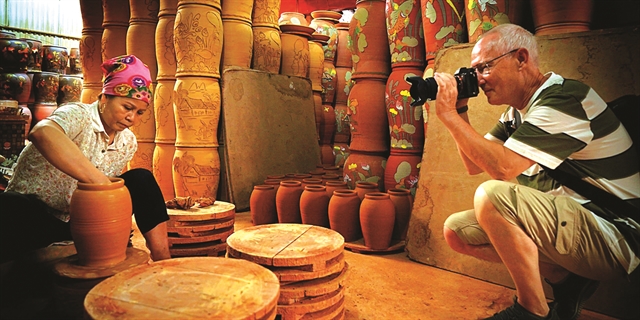 |
| Visitor at Phù Lãng pottery village. Photo Vũ Tiến Dũng |
From local to global
The results were soon visible.
So far, the village boasts over 200 households engaged in pottery production. Around 1,000 workers are directly involved in pottery-making, producing over one million products each year.
With support from the project, several local workshops began redesigning their product lines. Colour palettes became more refined, patterns more subtle, and forms more suitable for export markets. Some studios began offering pottery classes for tourists and locals, turning the village into a creative destination.
One standout example was the transformation of old family pottery into a multi-functional space — part gallery, part workshop — where visitors could watch artisans at work and try their hand at making pottery. The space quickly became a favourite stop for culture-loving travellers.
“It’s not just about selling potteries,” Huân said. “It’s about telling a story — the story of a village, a tradition, and a new generation.”
Moreover, under the project, a group of seven Vietnamese trainees have currently come together to form a cooperative that continues to build and develop the ceramic craft in Phù Lãng. With support from Japanese experts, they have successfully constructed a new kiln at a new location and produced quality ceramic products, according to JICA Vietnam.
From February 22 to 25, 2025, the Phù Lãng Pottery Festival and New Kiln Inauguration Ceremony were held, with the participation of the cooperative and nine other ceramic households in the village, supported by the local authorities.
Challenges ahead
Despite these successes, the road ahead isn’t without hurdles. The younger generation still faces pressure from family members who are sceptical of change. The infrastructure in the village, from roads to logistics, remains underdeveloped, making it hard to scale up production or host large numbers of visitors.
Environmental concerns also loom large. Traditional wood-fired kilns, though authentic, contribute to air pollution and deforestation. Some young artisans are experimenting with electric kilns or cleaner fuels, but these require investment and technical support.
There’s also the challenge of maintaining product quality while increasing output. As demand grows, some workshops are tempted to cut corners or outsource parts of the making process. For artists like Huân, this is a delicate balance.
Still, there is a growing sense of optimism in Phù Lãng — a feeling that the village is on the cusp of something new. Thanks to a mix of youthful energy, cultural pride, and international collaboration, a new chapter is unfolding.
What was once seen as a dying craft is now being recognised as a living art form – one that reflects not just the past, but the potential of Việt Nam’s creative future.
“About 10 years ago, we were afraid the craft would die out,” Nguyễn Minh Ngọc, chairman of the Phù Lãng Pottery and Tourism Cooperative, recalled. “There were fewer apprentices, and the market was shrinking. But things started to change when we began encouraging young people to experiment and create new products.”
“Before, each household was doing things their own way. Now, we work together to build a brand that represents Phù Lãng as a whole,” Ngọc said. “Tourists come not just to buy potteries, but to learn, to feel connected. That experience adds value to what we do.” VNS

